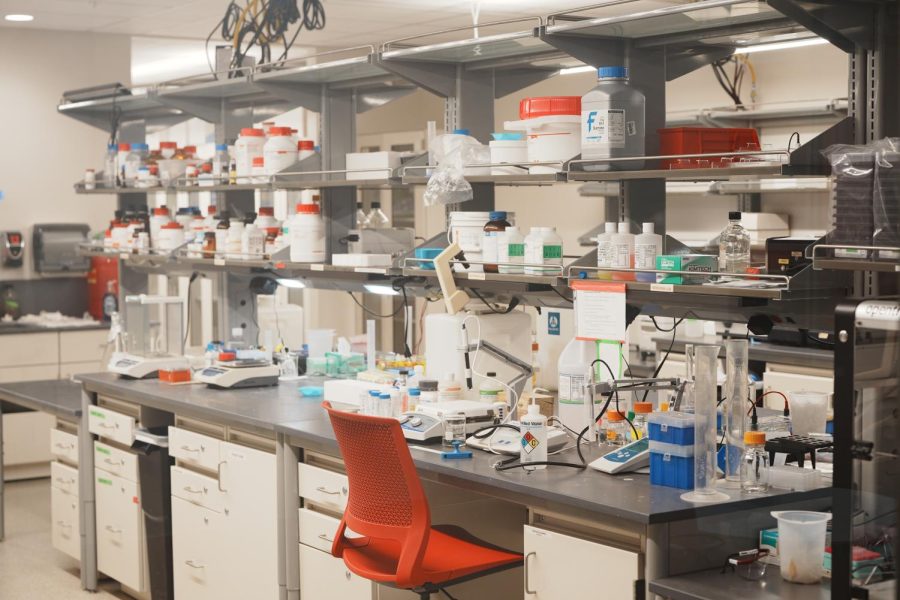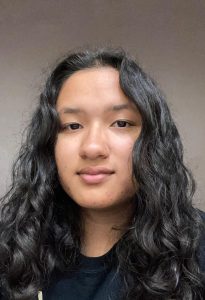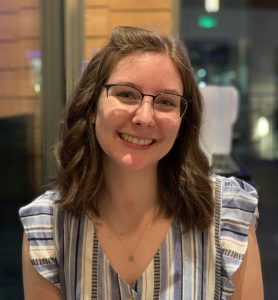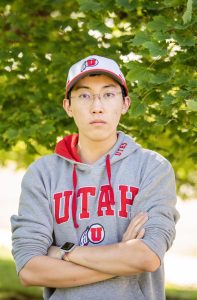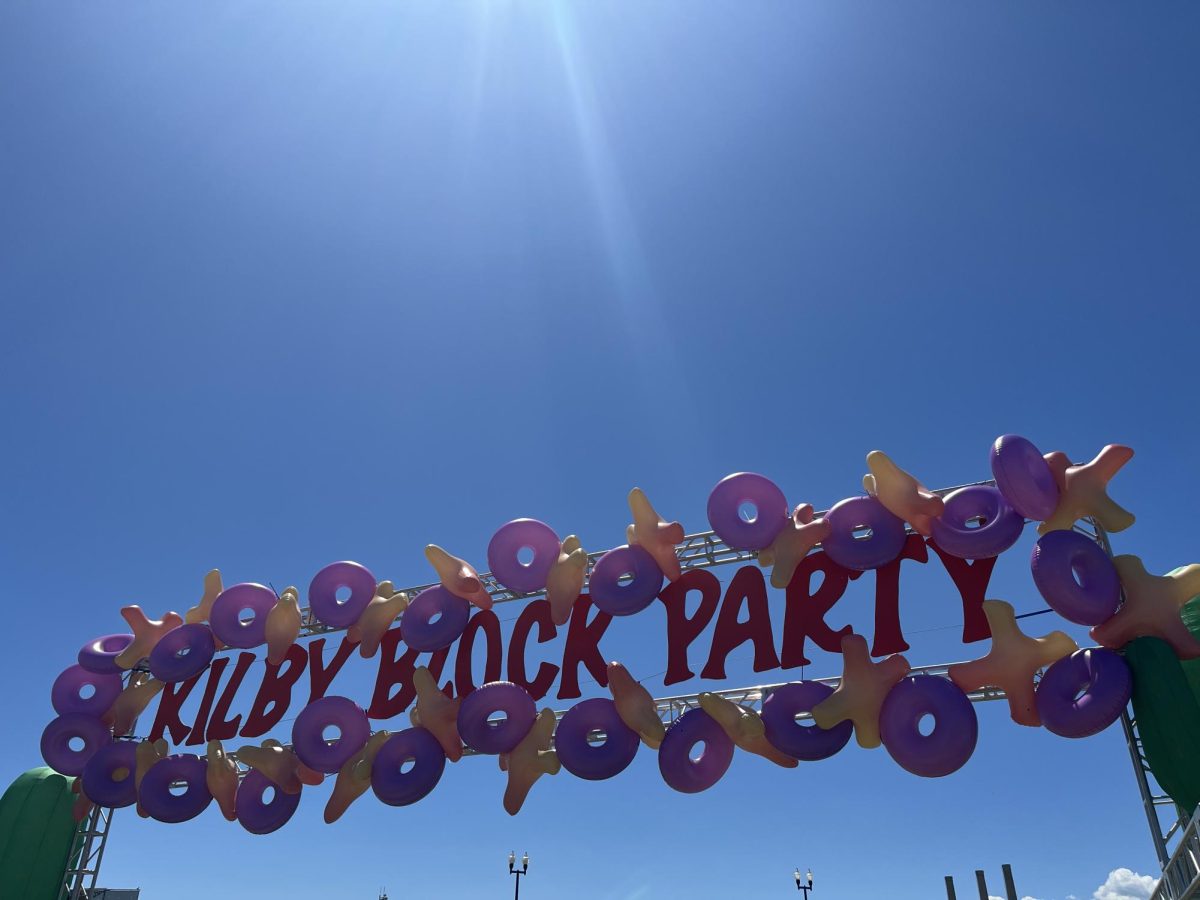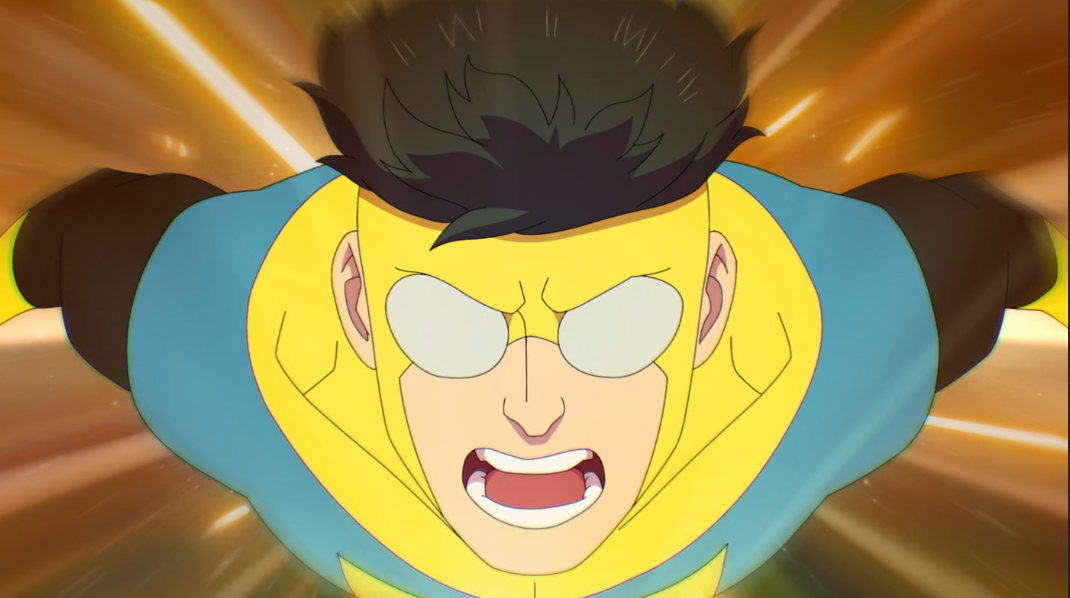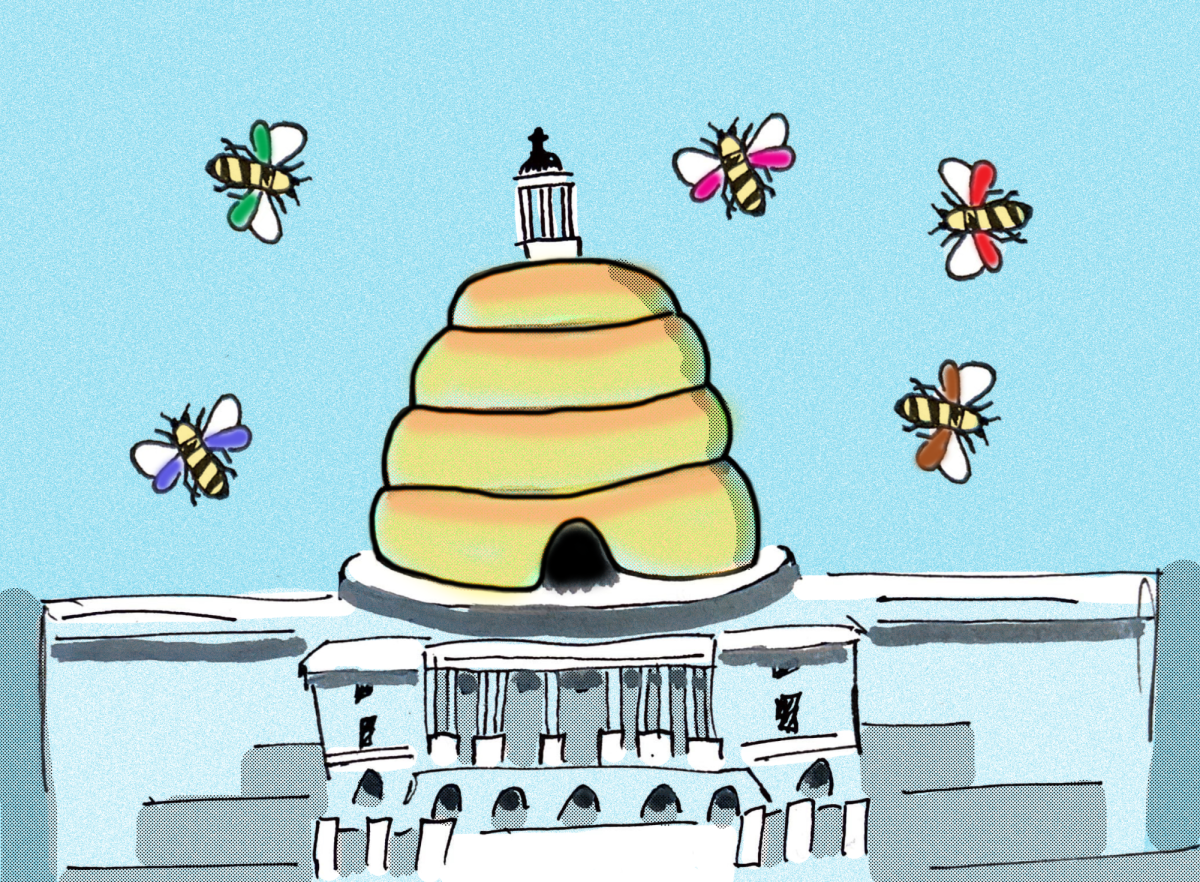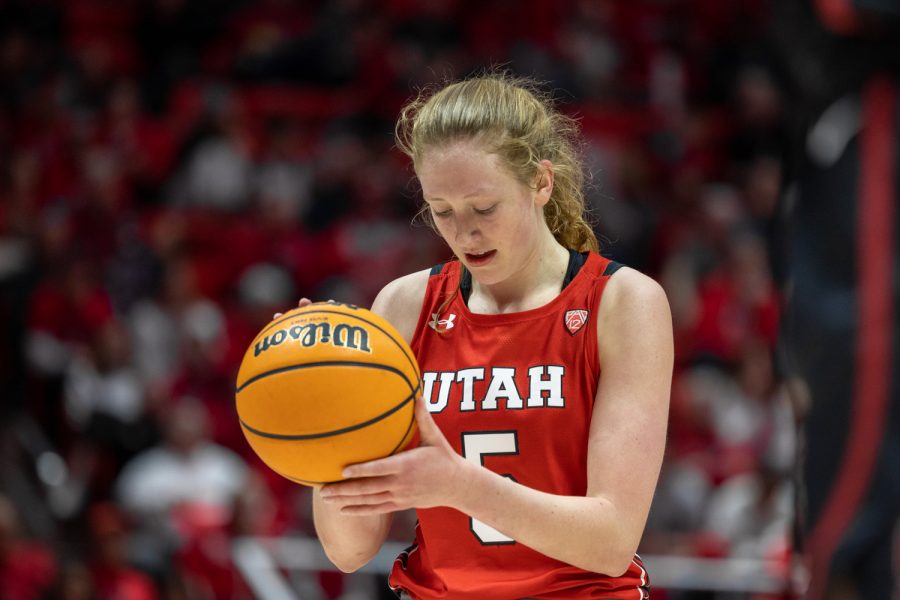Accessibility in STEM: Research, Courses and Student Organizations
A lab at the Crocker Science Center on the University of Utah campus in Salt Lake City on Tuesday, April 11, 2023. (Photo by Xiangyao “Axe” Tang | The Daily Utah Chronicle)
April 16, 2023
Disabled students at the University of Utah experience exclusion in many ways on campus, from automatic doors being out of working order for extended periods to long, roundabout detours around construction. In undergraduate labs, benches are too high for wheelchair users and a lack of chairs and other accommodating tools make completing required lab courses, let alone extracurricular research, a challenge.
Alongside these physical barriers are social barriers that can make it difficult for students with disabilities to feel like they belong at the U. Two groups on campus are working to make the college experience more inclusive and accessible for these students, particularly those interested in STEM.
‘Nothing about us without us’
The U’s Center for Excellence in Ethical, Legal and Social Implications Research Program aims to research and teach about ELSI issues, particularly within genetics research. Its Graduate and Undergraduate Researchers of UCEER, or GURU, program aims to help students get involved in research — particularly those with disabilities.
Jim Tabery, a professor of philosophy at the U and the principal investigator for GURU, started the program with the goal to pair students with faculty who are conducting research to provide research and lab experience and help them succeed in their academic and professional goals. According to Tabery, the National Institute of Health has been working to improve diversity in their ELSI scholars for years, but the U’s decision to focus on the inclusion of researchers with disabilities makes it the first of its kind.
“It’s not just that we were the first program to get awarded one of these [grants] that focuses on disability, we were the first program even to propose it,” Tabery said.
While the U’s Center for Disability Services works to accommodate physical barriers to attending class and provides resources for test taking and assignments, there are limited resources for making research environments accessible to students with disabilities.
“To the extent that we think of universities as being these engines for generating knowledge, that’s a real problem if we’re leaving students with disabilities out of that,” Tabery said.
Tabery said the first step to creating more inclusive, accessible research spaces is simply reaching out to students with disabilities to let them know they are wanted.
“[Reach out to students] and say, like, ‘Hey, we want you to be a part of this team,’” Tabery said. “The GURU program is about trying to design something from the ground up that says, ‘This is who we’re focusing on, this is who we’re bringing in.’”
One of GURU’s goals is to help relieve tension between the medical research community and the disabled community. GURU’s slogan, “nothing about us without us,” highlights the fact that people with disabilities have long been left out of conversations, policy decisions and technological development relating to disability.
While the phrase first arose during the disability rights movement, ethical conversations and decisions about prenatal genetic testing, data privacy and other topics that affect individuals with disabilities disproportionately have not always included people with disabilities.
According to Tabery, many people with disabilities are concerned that medical research is focused on “creating a world where there’s fewer people with disabilities” rather than a world that is accessible to those with disabilities.
“There was a fear that ableism was built right into the fabric of medical genetics, and so we really felt it was important to then get people with the lived experience of disability into these conversations about the ethical, legal and social implications of that science and technology,” Tabery said.
GURU not only includes students with disabilities in the research being done, but helps them access mentors with disabilities at universities around the United States to help them navigate ableism in academia.
Tabery pointed out that while there are many physical barriers, like the layout of a laboratory or the height of countertops being inaccessible to wheelchair users, it’s more often about the way information is provided. In-person gatherings may be inaccessible to immune-suppressed people, for example, or information in a written format may be difficult for some students to process.
The GURU program encompasses research in many disciplines and includes students with both visible and invisible disabilities.
Aubrey Mansfield is a graduate student pursuing a master’s in recreational therapy at the U and has been part of the GURU program for two years. She works with Tabery, researching the history of eugenic sterilization in Utah.
“In the 20th century, people who had disabilities and other groups were forcibly sterilized so that they couldn’t have children and so my project focuses on identifying how many victims there were,” Mansfield said.
Mansfield said the program provides opportunities for many different connections through mentorship, meeting other disabled students and networking with people are disabled in academia. This was a big change to before joining the GURU program, when Mansfield said she didn’t know anybody else at the U who identified as having a disability.
“Being a part of the program, you have a support system,” Mansfield said. “You have your main mentor who you do your research with. But you also get to meet other people in academia who identify as having a disability. … That opportunity to connect with other people who have disabilities is just amazing. I know I’ve learned so much from it.”
Mansfield said the GURU program encourages students to “explore” and “broaden your horizons.” In her case, while she still hopes to pursue a career in recreational therapy, she said the experience she has gained in research has opened up many possibilities.
“I want to work with kids and teenagers who have physical disabilities,” Mansfield said. “I still want to do that, but now with the whole eugenics sterilization project, I’m also kind of looking at career paths where I could still work on the eugenics sterilization idea. So I really have a whole new option for a career path.”
Based on her positive experiences, Mansfield said she would recommend the program to other students.
“It’s hard to even put into words because I feel like the program has helped me so much,” Mansfield said. “I just cannot give the GURU program and the people who run it, the mentors and administrators, enough praise or credit. They are fantastic to work with and GURU has really changed my life. I just can’t recommend GURU enough.”
Community and Solidarity
The Being Human in STEM course, co-taught this spring by professors Claudia De Grandi, Rodrigo Noriega, Caroline Saouma and Seetha Veeraghanta, aims to connect STEM faculty and students at the U to identify issues with the current STEM environment and develop interventions to alleviate these problems.
“[The class] is about acknowledging that students in STEM are humans and their identities are welcome in the classroom,” said De Grandi, the physics professor who first brought the class to the U. “Because in STEM, often students feel like ‘Oh, my identity needs to remain at the door, whoever I am doesn’t matter because science is rational.’ … That’s incorrect.”
The course was started by a chemistry professor at Amherst College in 2015 in response to protests taking place on college campuses across the country, voicing the need for greater inclusion of students from marginalized groups, particularly racial minorities. De Grandi implemented the course at Yale before eventually bringing it to the U.
Although De Grandi leads the class every year, she co-teaches with different faculty, ensuring that perspectives from different departments and experiences within STEM are included. Regarding the content of the course, De Grandi said many topics concerning discrimination are introduced, including racism, sexism and ableism.
“We do talk about ableism and mostly disability and ability specifically in STEM, so we cover that regularly every semester,” De Grandi said. “Part of the class is led by students, so students decide to discuss specific topics and so sometimes someone will go more in depth in some of those topics.”
The course ends with a project of students’ choice — and for Clay Walker, who was an undergrad chemistry major while taking the course, that project turned into the Disability and Access in STEM organization.
The group hosts social events with the goal of providing “an inclusive space for disabled students, faculty, and staff in STEM” and creating “a counter-space on campus that provides students with the support, resources, and community needed to excel in college.”
The project started with Walker and classmate Anna Stephens conducting surveys surrounding accessibility and presenting their data. They found that just 44% of students diagnosed with a disability had official accommodations from the university, with most stating they didn’t know what was required of them to get the accommodations or that the process was too confusing and stressful.
Their project extended beyond the class, as they continued to collect and analyze data over the summer before eventually creating a registered student organization. Walker recognized the need for informal support systems led by students with disabilities after conducting the survey.
“Originally, our idea was much more of a focus on, not necessarily activism but awareness and education in terms of approaching departments and sharing what we have learned,” Walker said.
Quickly, though, it became clear that meeting with departments and trying to share their experiences required a lot of energy and didn’t yield great success.
“We realized, ‘Okay, I think we need to switch gears,’” Walker said. “We’ve definitely switched more to just being … a place where disabled people can just be themselves.”
The group now aims primarily to provide support for people with disabilities by listening to and validating what they’re feeling, and providing resources.
De Grandi continues to remain involved in the organization, serving as the group’s faculty advisor, which means checking in with the club’s leadership and helping to organize events.
Walker emphasized that while the U has resources for improving the accessibility of class material, it can be daunting to “out yourself” as having a disability. The CDA requires a diagnosis, which requires costly and time-consuming doctors’ appointments.
“The CDA does a lot of good things,” Walker said. “But I do think that you need to be in that vulnerable ‘out’ position to professors and the CDA, and in some ways that’s harder to do than just telling a friend … and that can definitely be a barrier.”
In past years, students with CDA accommodations had to physically hand an information packet to their professor.
“Everyone I’ve talked to [about the packet] has told me how stressful that was — having to walk into their class … and give that packet to their professor in front of all their fellow students,” Walker said. “There’s that fear of having someone ask them, ‘Oh, what was that about?’”
Since the U moved online for the COVID-19 pandemic, professors get an email from the CDA informing them of the accommodations, but this often leaves students out of the loop when creating a system to meet their needs.
De Grandi said DASTEM became a safe place for students with disabilities to vent and simply exist.
“So many people signed up to share their stories and it’s been a venting place … just to have a bit of visibility, the fact that [the club] existed, I think meant quite a bit for several people,” De Grandi said. “I can say that from the social that we organized in November, the people that showed up were very thankful.”
Each year, the Being Human in STEM course culminates in a symposium where students present their final projects. This year’s event will be held May 3 from 1-3 p.m. in Crocker Science Center Room 205.
a.khatri@dailyutahchronicle.com


